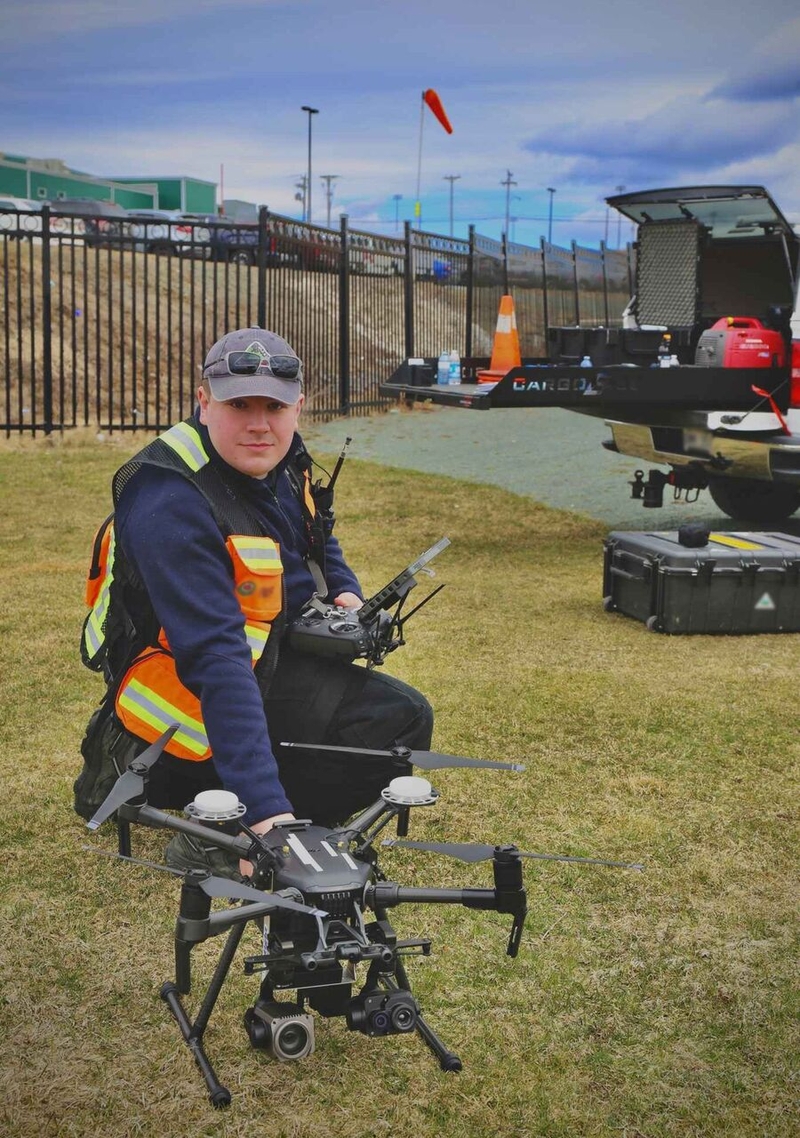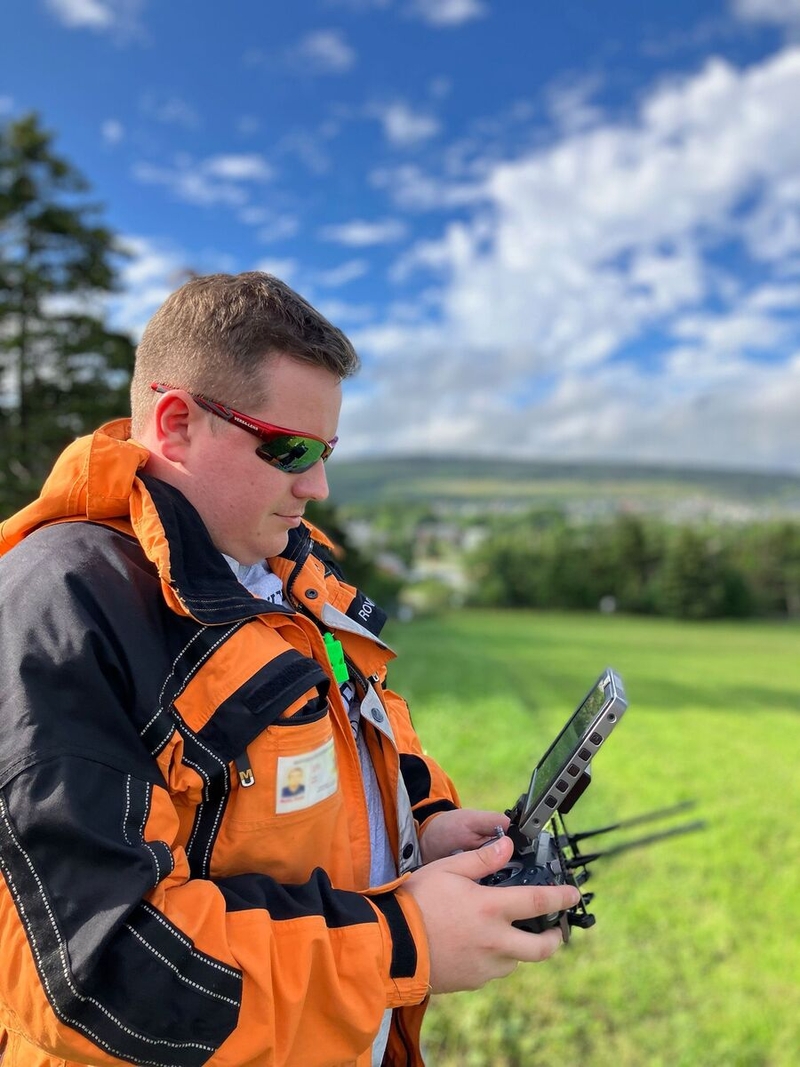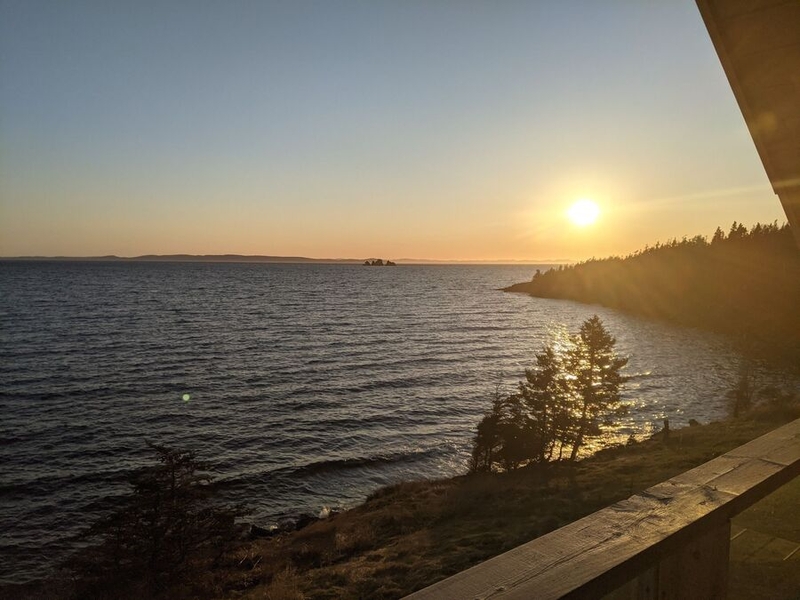The people who use our boards.
314 interviews since 2018
The people who use our boards.
David Burke
911 DispatcherWho are you, and what do you do? What do you like to do outside of work?
I’m David Burke. I’m a gamer, hiker, and overall computer enjoyer. Among the many hats I wear, I’m a 911 dispatcher. It’s an incredibly rewarding career path, with its fair share of challenges. However, it’s one that I truly love. In my free time, I spend a fair amount of time learning to code, playing games, and exploring new and cool tech. When the weather cooperates, I like to go outdoors and enjoy the incredible nature around me, and when the call comes in, help those who need it out there. I volunteer with my local Search and Rescue team, where among many other skills, I am one of the drone pilots. Ever since I was a child, I’ve been drawn to technology and making it work for me, so when I had the opportunity as a SAR volunteer to certify as an advanced RPAS pilot and help conduct searches for lost and missing people, I jumped at the opportunity. Tech is one of my favourite things, and being able to leverage it to not only make my life easier, but also potentially save another’s, is just the coolest thing.


What hardware do you use?
At work, I put my ErgoDox EZ to use so I can work like a power user at my dispatch station, which is a sit-stand desk our department provides to make sure we’re able to effectively use our five-monitor computers, radios, and phones to get the job done, and not risk ergo strain while we’re at it!

In my work bag, which is a duffle bag that follows me into and out of my temporary home, I have two tech pieces that are essential for those long shifts; my ErgoDox EZ and my Kobo eReader. During my downtime at the building, I love reading, and really take advantage of my local library’s selection, but I just hated having to carry big bulky books around, and more often than not ended up damaging them. While it doesn’t have the same feel to it as a real book, it gives me an almost-good-enough replacement that turned me from paperback to plasticback.
At home, my setup is a little more varied. I rotate between my main gaming computer, my laptop, a couple project servers, and a proper working desk for when I need time away from all the distractions. My main gaming rig is a piecemeal build of AMD products, running a Ryzen 5 5600G, Radeon RX6700XT, and 64GB RAM to support my three monitors used for projects, gaming, and tinkering. While my setup is certainly not winning any awards for beauty, it’s a consistently growing and evolving product that lets me swap from sim racing and trucking to FPS and strategy games. My Franken-gaming setup started as a Logitech G27 and a couple USB zero delays, and has since grown to a home-brewed driving and gaming setup. In a few more days, I’ll be adding an Elegoo Neptune 4 Pro to my collection of toys and I’ll start turning my setup into something more visually appealing, and maybe start on that cable management I keep promising myself that I’ll do.

Fitting with the home brew style, I have a fortunately rarely used setup from my Zoom-every-day pandemic days of a full green screen box, with green sheets on curtain rods, a Logitech C920 HD camera, and a ZaxS condenser mic, with various lights all around my main gaming setup and a Philips surround sound system. I figured since I had to Zoom every day, I might as well do it right. Maybe one day down the road I’ll put some of this back into use and start streaming, but I don’t know if I have the attention span to really commit to it!
My laptop and “home work” station are a little more run-of-the-mill, running a much less powerful computer, but lets me focus on writing, studying, and learning, with none of those pesky distractions that a gaming rig brings.

I like to rotate between different projects while I learn to code and really take advantage of what tech can offer, so I’ve got a few old computers kicking around, from old Dell workstations to retired hardware from my own kit to even Raspberry Pi computers for flightfeeding.
I fly DJI drones, whether it’s my personal Mini 2, or the SAR Team’s Matrice 210RTK, and love their ecosystem. I’ve started learning little tips and tricks and different ways I can take advantage of both of the drones to accomplish new things, from drone photography to full 3d mapping.
I found the ErgoDox EZ fit best in all of these applications because it folded on itself fairly easily, allowing me to take it everywhere I went, while also left a big (but not too big) footprint for me to work on, compared to some of the little keebs I’ve tried over the year. Originally I went for the Cherry MX Red RGB, out of respect for my coworkers, but found even that was a little louder than I wanted, so ended up swapping the majority of my keys out to Gateron Silent Brown, with O-rings and switch pads. Now all (most) of my keys are whisper-quiet, and I still get the much better feeling of a mechanical board all the time, even at work.
And what software?
At home and work, I’m almost exclusively a Windows user.
While we use a myriad of programs at work, ranging from web-based support apps, like RapidSOS and i911, to locally managed CAD and toner/alert software, the bulk of my choice—and my fun—comes from and goes into my personally selected programs. I am by no means a browser loyalist, with Chrome, Firefox, Opera, as well as Edge among my daily drivers. My biggest commitment to any real ecosystem would probably be the Google suite, from Calendar, which is a lifesaver, to Assistant and Gmail. They all to keep track of the many different commitments and plans I make. I’ve been learning to code mostly in Notepad++, which is pretty much my only text viewer, and I swear by it.

When I’m not working, gaming, learning, or outdoors, I do get quite an enjoyment out of writing. When I first started in middle school, I’d fill Hilroy exercise books with page after page of stories, but as I got older, I migrated through different programs. Now, with less time to focus on writing, and more time between sessions, I exclusively use Wavemaker Cards 4 whenever I want to write a few lines up here or there, and love that I can swap between pretty much any device and grab notes, descriptions, and anything else I might need right where I left off. If I ever go back to school and have to deep dive into papers, I think this could be an excellent way to power through those too.
My first real non-Windows project was setting up a flightfeeder on a Raspberry Pi, which I use to track and feed aircraft ADS-B data to various services like FlightRadar24 and FlightAware. Each site generally will run its own different program, so the raw data gets fed into those programs and shared with the different sites. The coolest thing about it is I never have to look up and wonder, “Oh what’s that plane?” anymore. It was a fun little project and a great little introduction into a different OS, as well as the power of a Raspberry Pi.

I rely on Map Pilot Pro for my own personal drone mapping projects, which are all processed through my WebODM server I built on an old Dell workstation running inside of a Linux container through Docker. One day I’ll probably do it right and dedicate a piece of hardware to it. It really surprises me at the quality levels that open source and fairly cheap software can achieve when compared to some of the major enterprise level names we use for professional applications. If anything, that’s a testament to just how neat the tech world can be!
What’s your keyboard setup like? Do you use a custom layout or custom keycaps?
What really drew me to the ErgoDox EZ was the ability to quickly change layouts, setups, and macros, all without any software needed on the computer in use. We have the ability to use a lot of hotkeys at work, and have some pretty specific functions, but our computers are work-use only, and of course that means no unauthorized software allowed. Having to get IT to sign off on keyboard software for me to use my personal keyboard on each dispatch console would be impossible! Not having to worry about running special software on each PC, and still having the ability to quickly make changes and flash them to the board has been the biggest plus!
I struggled with the layout at first, having spent my entire life on a straight QWERTY board, with no real ergo settings. Getting used to a split ortholinear was a big challenge. The first time I ran a typing test, I scored just barely into the single digits. I’m a fast typist normally, but it took some time to learn the whole new layout and get my numbers to a point where I was comfortable using it for work, and even play.
Now I run with a pretty much standard base layer, with a couple layers I put down solely for different (and very distinct) tasks or stages of dispatch at work. I tried to explain each key and idea in my tour, but pretty much every key was either a try-fail-try again, or an epiphany that might make my workload just a little easier. Either way, this is why I love the ability to flash a new layout so quickly, whether it’s to deal with those bad ideas, or just to try a new one out.
One layout I’ve been practicing on, but haven’t really brought into my main board as a layer, has been a Steno layout. The idea of Steno is so cool, and the ErgoDox EZ has really allowed me to get used to it and really build proficiency. I’m still far from where I’d love to be with it, but once I learn how to really do it well, my goal is to try and live-caption some of those videos I watch that are either missing captions, or have the autogenerated ones that just don’t make sense. I’ve done it before just trying to type and keep pace on QWERTY, but it’s hard to go that fast. That’s my next big project with my ErgoDox EZ, getting comfortable enough with Steno to pop it into my regular layout and start using it more than just practice projects.
I use the included keycaps for Glow because we often work in pretty dark conditions and I didn’t like straining my eyes, but I’m probably going to consider upgrading these caps soon. A lot of the other interviews here have some really cool packages that I’d love to try out. I swapped my Cherry MX Reds out for some Gateron Browns with a little extra dampening to really make that whisper-quiet experience because my coworkers like me now, but after a dozen hours of clickity-clackity I can’t say they’d feel the same way!
What would be your dream setup?
Oh boy, that’s a hard one! I watch a lot of tech reviews as background noise and they often show off some cool (but way too expensive) gadget that I’d like to try, or I see another setup on something like r/battlestations and get totally jealous. I think I’d like to have the time and resources to really build a more solid version of my gamer computer setup, with a separate cockpit and gaming station, and on a solid sit-stand desk like we use at the 911 centre. I’ve never owned an expensive monitor, but I think I’d really like to try one of these ridiculous monitors with ultrahigh resolution and just see if the difference is really there. As much as some of the higher-end hardware (I’m looking at you 4090) seems like a really cool thing to have, I genuinely don’t know if I’d even really enjoy it yet for years, since none of what I do really would enjoy that kind of power.
Right now, I have been slowly moving everything in my house over to smart, starting with the lights, then the heat, and so on. While I don’t see the appeal of a smart fridge, there’s so many cool projects on r/HomeAutomation I see on Reddit every time I log in, and I love looking at the little projects that everyone runs. Like the rest of my tech, everything is piecemeal and kind of just works, but I’d love to start over and build it all from the ground up to work together and be even more powerful than it is now.
My dad has always been a woodworker and pretty much has always had, at the very least, a little project room to do his woodworking and experimenting with it, finally getting it built up to a full garage just for his projects. I think I’d want something like that, but completely for tech, so my partner isn’t always tripping over scattered computer components, or questioning why there’s another set of boxes arriving from some different tech company. I grow tired of (or frustrated with) projects after a little time picking at them, so I’ll often have a half dozen (or maybe two dozen) half-finished projects in one place or another, and having a full garage to pick at them all without putting it away when I grow bored seems like a great end goal.
New tech is cool, but tech I can rip down to the bare bones and build it back up is even more fun!





